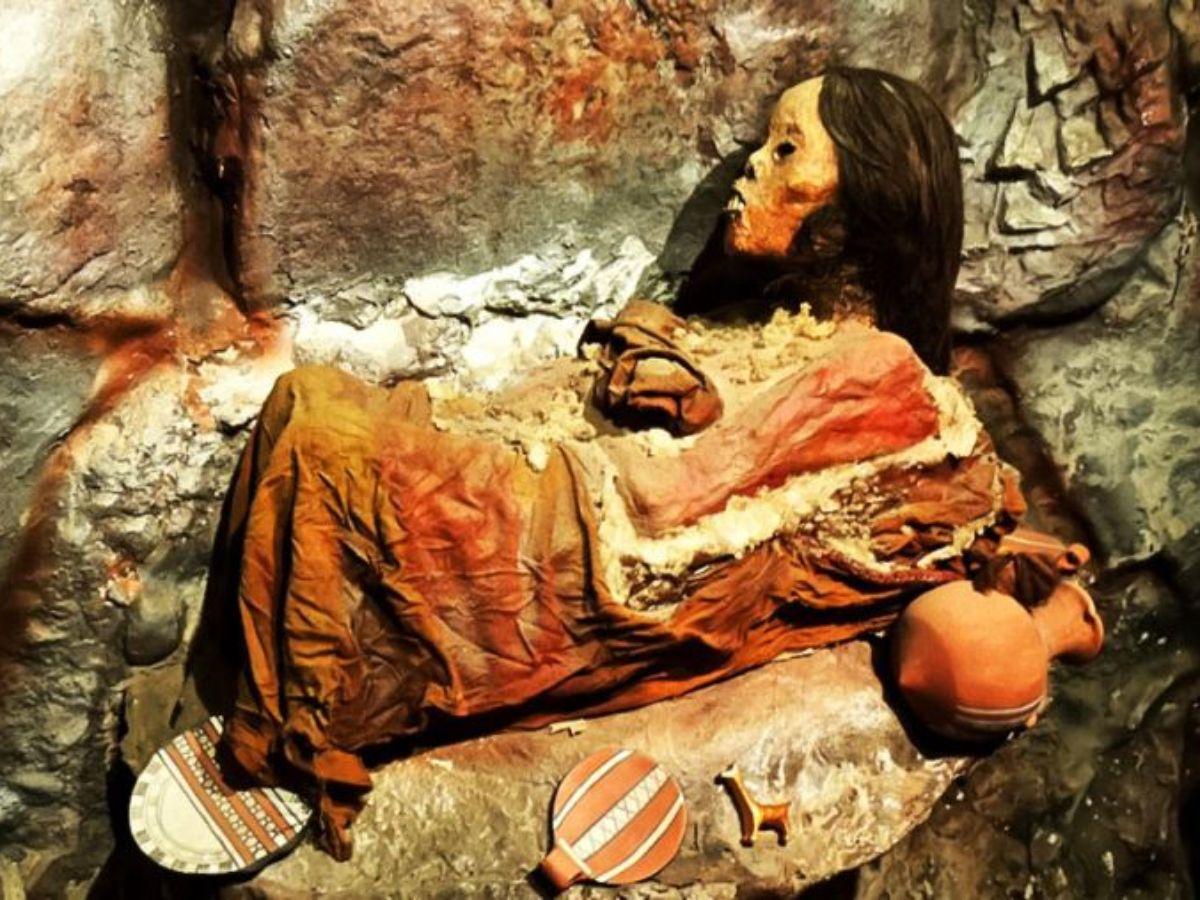Popularly known as Mummy Juanita, the finding of a young Inca girl sacrificed more than 500 years ago (between 1440 and 1480) made headlines because of the body’s well-preserved, frozen condition. Analyzing her internal organs, hair, skin, and blood provided scientists a glimpse into the cultural and societal practices of the Incas of the time (during the reign of Inca Pachacuti).
Because of the significance, in 1995 Time magazine named Mummy Juanita one of the top 10 most important discoveries in the world.
It’s believed that the young girl was between the ages of 11 and 15, corresponding to the age of the children who were sacrificed as tribute payment under Inca rulers. These sacrifices, known as Capacocha (or Qhapaq Hucha), were performed at celebratory events (such as battle victories, death or birth of Inca royalty, etc.) or ceremonies to prevent droughts, earthquakes, or other natural events.
The mummy was found wearing textiles resembling those of Cusco’s elite. This along, with the geographical location of the sacrifice, suggests to archaeologists that the young girl was part of Cusco’s nobility. Furthermore, by analyzing her hair, scientists were able to determine that she ate maize and animal meat prior to the sacrifice, both of which were part of the diet of the elite.
Analysis of her hair also indicates that she was given, as were many sacrificed children, alcohol (chicha) and coca prior to the sacrifice.
In 1995, American anthropologist Johan Reinhard climbed the volcano Mount Ampato in Arequipa located at about 20,630 feet above sea level. He, along with his travel partner Miguel Zárate, came across a bundle inside a crater, most likely fallen from an Inca burial site at the summit.

The two men took the frozen bundle to the Catholic University of Santa Maria in Arequipa where it weighed 90 pounds (40.82 kg). The body of the sacrificed girl was given the name Juanita, and is also known as the Lady of Ampato and the Inca Ice Maiden. She was found with various artifacts around her, including a llama figurine and pottery.
Other frozen mummies were found in subsequent expeditions to Mount Ampato, including a boy and a girl found in October 1995 and a female mummy in 1997.
The Mummy Juanita is on display at the university’s Museum of Andean Sanctuaries (Museo Santuarios Andinos) in La Merced, Arequipa. In 1996, she traveled to the National Geographic Society headquarters in Washington D.C and also traveled on tour to Japan in 1999.
In December 2020, the Mummy Juanita, and 80 other pre-Columbian artifacts found in Mount Ampato that are housed in the Andean Sanctuaries, were recognized as Cultural Heritage of the Nation.

Cover photo: Andina
archaeologyarchaeology in peruCapacochachild sacrificeinca cultureinca historyInca Ice MaidenInca sacrificesLady of AmpatoMount AmpatoMummy Juanita





